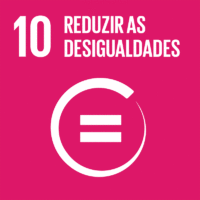Ciência_Iscte
Publicações
Descrição Detalhada da Publicação
The relationship between tax rates and tax revenues in eurozone member countries - exploring the Laffer curve
Título Revista
Bulletin of Economic Research
Ano (publicação definitiva)
2020
Língua
Inglês
País
Reino Unido
Mais Informação
Web of Science®
Scopus
Google Scholar
Abstract/Resumo
We estimate Laffer Curves for direct and indirect taxes for each Eurozone country, using panel data from 1995 to 2011, by means of Seemingly Unrelated Regression (SUR) models. We choose the three taxes that contribute the most to the government tax revenue: the value added tax (VAT), the corporate income tax (CT), and the labour income tax (LT). From our estimated significant parameters, which have the expected signs according to the Laffer Curve theory, we obtained a maximum/optimal tax rate for VAT for Greece, Portugal, and Slovakia and for the majority of the Eurozone countries for direct taxes. We also take into consideration the business cycle. Many countries do not present differences in regime, and when they do, the optimal tax rate is higher during recessions. Finally, we compare the observed tax rates in 2012 to the estimated optimal tax rates, to assess if the 2012 policy was located at the prohibitive range of the Laffer Curve. Our results are important for the discussions about fiscal discipline and harmonization in the Eurozone, since they exhibit important disparities between countries and taxes. We can see that, especially for CT and LT, there is a strong divide between the values of the optimal maximum tax rates for Eastern European countries and Western European economies. Additionally, the economic and financial conditions of each country also influence the value for the tax rate.
Agradecimentos/Acknowledgements
We acknowledge the useful comments of Emanuel Leão, Isabel Salavisa, two anonymous referees, the associate
editor, and the editor. The usual disclaimer applies.
Palavras-chave
Laffer curve,Eurozone countries,SUR models,Business cycle
Classificação Fields of Science and Technology
- Economia e Gestão - Ciências Sociais
Registos de financiamentos
| Referência de financiamento | Entidade Financiadora |
|---|---|
| UID/GES/00315/2019 | Fundação para a Ciência e a Tecnologia |
Contribuições para os Objetivos do Desenvolvimento Sustentável das Nações Unidas
Com o objetivo de aumentar a investigação direcionada para o cumprimento dos Objetivos do Desenvolvimento Sustentável para 2030 das Nações Unidas, é disponibilizada no Ciência_Iscte a possibilidade de associação, quando aplicável, dos artigos científicos aos Objetivos do Desenvolvimento Sustentável. Estes são os Objetivos do Desenvolvimento Sustentável identificados pelo(s) autor(es) para esta publicação. Para uma informação detalhada dos Objetivos do Desenvolvimento Sustentável, clique aqui.

 English
English



